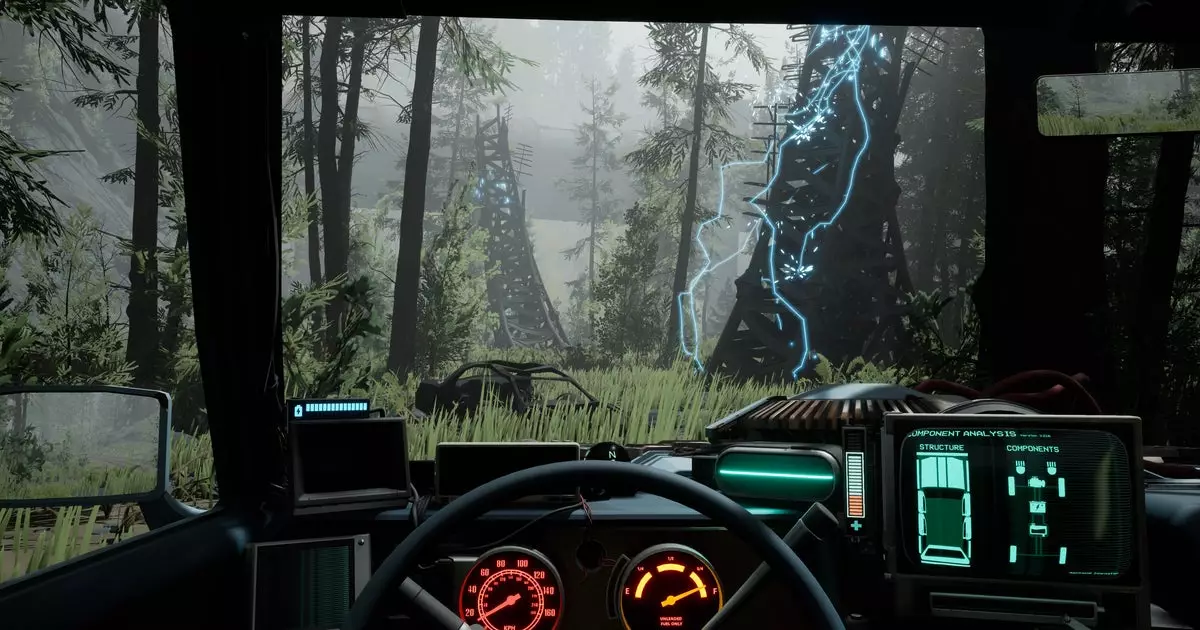Pacific Drive has redefined the survival genre with its unique blend of roguelike elements and immersive atmosphere. Yet, as with any title seeking to strike a balance between challenge and playability, it has sparked debate among players regarding its core mechanics. Ironwood Studios has responded to community feedback with a significant update that provides options to customize gameplay. This article examines the implications of this update, exploring the nuanced interactions between difficulty, player experience, and the very essence of what makes Pacific Drive captivating.
At the core of Pacific Drive lies the need for constant engagement with the game’s crafting system. Players are tasked with maintaining their dilapidated station wagon, a literal vehicle of survival, as they navigate a haunting and treacherous landscape. The challenge of scavenging parts and repairing the vehicle creates a tangible sense of urgency and immersion. However, this requirement for continuous crafting has also been criticized as cumbersome. As noted in the review, while the game successfully establishes a “trunk load of atmosphere,” the repetitiveness of the crafting process can hamper the overall experience.
Ironwood Studios’ acknowledgment of this critique through the latest update is a commendable acknowledgment of community sentiment. By providing various difficulty presets, the developers have empowered players to tailor their experience. The options cater to a wide audience, allowing those seeking a more casual experience to forego the more punishing aspects of survival while offering hardcore players the chance to truly test their limits.
The update introduces a spectrum of difficulty settings—from the overly simplistic “Scenic Drive” to the punishing “Olympic Gauntlet.” This variability in settings acknowledges that not all players approach Pacific Drive with the same expectations or skill sets. While some may relish the opportunity for a challenging experience, others may be overwhelmed by the mechanics or simply seek a more laid-back engagement with the game’s atmosphere.
However, one must critically assess the implications of an entirely customizable difficulty experience. Tailoring the challenge too much could dilute the core aspects of tension and adrenaline that define survival games. For example, the option to have a perfect survival rate and minimal crafting burdens could lead to a disconnection from the game’s intrinsic themes of desperation and resourcefulness.
While the flexibility of creating customized settings can enhance enjoyment for some, it runs the risk of alienating those who appreciate the game’s inherent challenge. It’s possible to argue that offering such granular control could siphon off the collective experience of struggle and victory that players might treasure in the shared context of gameplay discussions.
The update also introduces risky features such as the “Trunk Bonk kills,” which serves as an ironic reminder of the hazards that can arise in everyday situations. While it invites humor, it also reaffirms the game’s commitment to challenging players, forcing them to consider their environment and decisions carefully. This ability to manipulate not just the gameplay mechanics but also the consequences of player actions encourages a more engaged and mindful gaming experience.
The inclusion of personalized music options invites another layer of player engagement, allowing individuals to tailor their aural experience while traversing the eerie landscapes. The soundtrack’s crucial role in setting the mood cannot be overstated, and ensuring that players can inject their own musical preferences can help keep long sessions feeling fresh.
As Ironwood Studios continues to refine Pacific Drive, it faces the persistent challenge of maintaining a balance between accessibility and core gameplay integrity. While providing a diverse range of difficulty options is a step in the right direction, the developers must tread carefully to ensure that the essence of risk, reward, and immersion remains intact.
Understanding player preferences while retaining the tension that defines survival gaming is a delicate endeavor. Ultimately, Pacific Drive’s strength lies in its atmospheric storytelling and intelligent design. How well it incorporates player feedback without losing its unique identity will shape the game’s legacy in the ever-evolving landscape of video gaming.


Leave a Reply